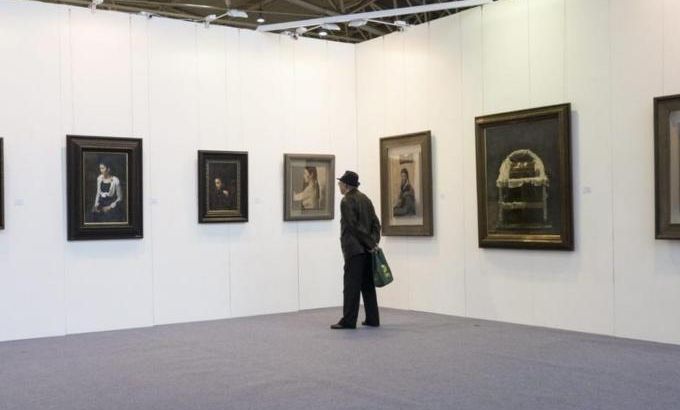
What is driving global art sales?
We ask if collectors really understand the value of art or if it is just part of a rising trend and a vanity act.
They say beauty is in the eye of the beholder, and when it comes to art, beauty can also come with an expensive price tag. But for some collectors investing in the art market can be more lucrative than investing in the stock market.
According to the consulting firm Art Economics, the art market has grown enormously in the past 25 years.
In 1990, more than $27bn worth of art was sold through dealers and auction houses. By 2007, the figure had more than doubled, to almost $66bn. And last year the market was still worth a staggering $56bn, despite the global economic problems.
If I can't sell something, I just double the price.
China has been driving growth in recent years, and works by Chinese artists have also been highly sought after. Three of the top-selling artists of 2012 were Chinese, including Jang Dah-Cheng, a life-long friend of Pablo Picasso.
On Monday, 24 of his works were sold at Sotheby’s in Hong Kong for a total of $42m.
Art academic Oscar Ho acknowledges that Dah-Cheng “is certainly an outstanding artist not only for his skills, but also for his knowledge and his ability to revitalise all the Chinese traditions …. He is definitely an outstanding artist in many senses within the Modern Chinese art tradition.”
It is also interesting to note that many of the world’s most sought-after artists often outperform the stock markets.
For instance, the returns on Picasso paintings in the 10 years to 2012, show that they did better than the Standard & Poor’s indices of 500 leading companies in the US. They have outperformed the market since 2005, and rebounded positively after the global financial crisis.
So which paintings have fetched the most?
Paul Cezanne’s ‘The Card Players’ is the most expensive painting ever sold – the Qatari royal family paid $250m for it in 2011. And unsurprisingly, Pablo Picasso is also in the top five – his oil painting ‘La Reve’ sold earlier this year for $155m.
The most expensive contemporary or modern piece of art ever sold was Jackson Pollock’s ‘Number 5, 1948’ for $140m. It was bought by an unknown buyer, rumoured to be a Mexican businessman.
In 2006, Steven A. Cohen, an American hedge fund manager, bought Willem De Kooning’s ‘Woman III’ for just over $137m. Also that year, Gustav Klimt’s ‘Adele Bloch-Bauer I’ – once confiscated by the Nazis – fetched $135m.
So, why are people spending that much money on arts pieces? Do they really understand the value of it or is it just all a rising trend and a vanity act?
To answer these questions, Inside Story, with presenter Shiulie Ghosh, is joined by guests: Jean Paul Guiragossian, a Lebanese-Armenian artist based in Beijing; and Oscar Ho, director of the MA programme in Cultural management at the Chinese University of Hong Kong.
|
” There is two sides of things, the speculation side of things and the arts side of things … between 80 and 85 percent of the arts dealers and collectors don’t know what art is. They just see, listen and read what art critics and other people are saying and they follow the trend.” – Jean Paul Guiragossian, a Lebanese-Armenian artist based in Beijing |